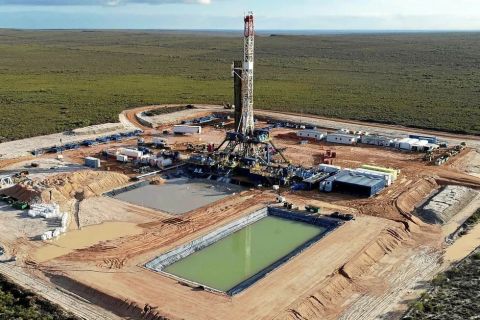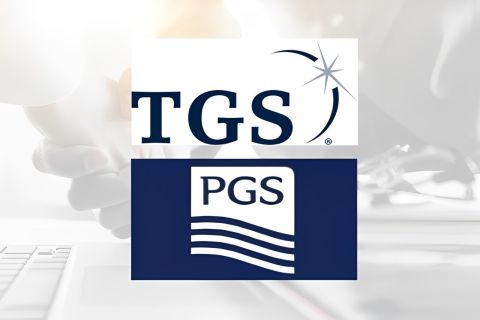
The ultradeep water in the Gulf of Mexico has issued the siren call of greater reserves and production along with the challenges and dangers of exploration and development drilling. To answer the call, operators are now requesting the latest step change in offshore pressure-control equipment, going from 15,000 psi to 20,000 psi pressure at much higher temperatures.
“There are two efforts going on. The deepwater fields have higher pressure on the drilling side—20,000 psi—and production systems have both higher pressure and higher temperature,” said Harish Patel, director of drilling technlogy for ABS. “The industry knows what it has to do. But how does it apply systematic technology qualification [TQ]?”
ABS is working with all three major BOP manufacturers, several major operators and drilling contractors in systematic TQ for HP/HT BOP stack and pressure-control equipment.
GE Oil & Gas is in product testing for its 20,000-psi BOP, wellhead connector, and choke and kill connectors. NOV is working on the control systems since the biggest failures with the BOP stacks have been with those systems, he added.
“With Cameron we just started testing. These tests could take from six months to one year. It is in the first stage of prototype testing—Technology Readiness Level (TRL) 3,” he explained. “All of the manufacturers are in the validation phase. The companies have built the prototypes and are in the testing phase. The first complete tests with GE and Cameron look promising.”

More complex issues
The current 18¾-in. ram-type BOP is rated at 15,000 psi at a temperature of 121 C (250 F). The working pressures and sizes of the 20,000-psi stacks do not meet existing American Petroleum Institute (API) specifications. At the same time, operators are requesting greater reliability and availability with the HP/HT stacks. The consequences of BOP failure at these pressures, especially in 3,049 m to 3,659 m (10,000 ft to 12,000 ft) water depths, are driving operators and drilling contractors to develop standards that would meet new, more stringent regulations.
“The primary reason for these increased requirements is that failure consequences are extremely high and could impact the entire offshore industry globally but also could be in anticipation of new offshore equipment regulations, which are expected to contain much more stringent performance specifications,” Patel, et al., said in OTC 2015 paper 25974-MS.
The issues facing HP/HT equipment are more complex, Patel continued. One issue involves the mechanical integrity of the equipment in that environment, and another is monitoring the “health” of the equipment over time.
The mechanical integrity is related to verifying the variation in material. The mechanical properties of the materials are being extended beyond previously accepted limits and must meet more stringent ductility requirements while resisting aggressive, corrosive environments.
There are two major components. The metallic component provides the pressure boundary, and the elastomeric component is used for pressure control, he explained.
The sheer size of the metallic components of the HP/HT BOPs creates problems. “The BOP forgings are getting so large that the material integration is a large part of what needs to be verified,” he added.
For example, GE’s 20,000-psi stack right now weighs between 1.3 million pounds and 1.5 million pounds. “The drilling rigs will require total redesign to be able to handle these new stacks,” he emphasized. “It is still debatable whether Generation 6 or 7 rigs can be modified for the new equipment.”
Given the number of times this equipment will be run, installed, and pressured up and down, there will be questions about the safety of the equipment after repeated use. Being able to continuously monitor the equipment is another major area that is being targeted
during qualification, Patel said.

Independent party does testing
ABS is involved with all of the major manufacturers as well as smaller vendors for TQ of the BOP equipment. A third party like ABS brings an independent view of the TQ process to verify and validate the equipment to the satisfaction of the industry, regulators, insurers, investors and other interested parties.
According to ABS, TQ is a method for providing evidence that equipment will function within specifications and operational limits with an acceptable level of confidence.
There are several ABS publications that provide information on how to receive ABS approval for TQ. In order of importance, the publications are ABS Guide for the Classification of Drilling Systems, ABS Guidance Notes on Review and Approval of Novel Concepts, ABS Guidance Notes on Risk Application for the Marine and Offshore Oil and Gas Industries and Guide for Risk Evaluations for the Classification of Marine-related Facilities.
The TQ process also includes using API and American Society of Mechanical Engineers (ASME) guidance documents and design codes for HP/HT equipment.
An iterative process is used to validate and verify the HP/HT equipment. Each iteration is a learning process to refine the specifications for HP/HT BOPs. The HP/HT design requires elastic-plastic, fatigue and fracture-mechanics analysis in accordance with ASME Boiler and Pressure Vessel Code, Section VIII, Div. 2 and Div. 3 along with API 17TR8 requirements and methodology.
“For example, the design for fatigue was not done for the 15,000-psi design. Major modifi cations include using greater wall thickness for pressure-containing equipment and new elastomeric materials for pressure control,” Patel said. “The bolting is getting to be a bigger challenge. Whether it is a bonnet bolt or connector bolt, you don’t want them failing.”
There are a lot of issues with control systems and emergency backup to be qualifi ed as well. Some issues will be addressed when API 53 comes out. API 16C was just published. The organization is working on a new version of API 16A. API 53 and 16D will require certain essential functions by ROVs to be tested before deploying it.
Starting from scratch
HP/HT is pushing the boundaries of existing pressure control technology. The development of these standards is diffi cult since these would be above and beyond existing standards and industry practices. Developing the standards requires applying design methods not used before in the industry.
The entire pressure-control system is undergoing verifi cation and validation. This includes modified wellhead connector design; ram-type BOP bodies; lower marine-riser package connector, choke and kill connectors and valves; main bolting; emergency shutdown equipment; backup systems; ROV activation; acoustic backup, measuring one-to-two barrel gains, riser gas handling; managing back pressure; managed pressure drilling; ram closing times; and other parts of the system, Patel explained.
“ABS recognizes the need to assist the offshore industry in developing a systematic TQ program to verify and validate the technology proposed to transcend the boundaries of existing technology,” he emphasized.
Acknowledgement
This article is based on OTC-25974-MS, “Systematic Technology Qualifi cation for HP/HT Subsea BOP Stack Equipment and System to Improve Safety, Reliability and Availability,” presented May 4-7 at the 2015 Offshore Technology Conference in Houston.
Recommended Reading
Brett: Oil M&A Outlook is Strong, Even With Bifurcation in Valuations
2024-04-18 - Valuations across major basins are experiencing a very divergent bifurcation as value rushes back toward high-quality undeveloped properties.
Marketed: BKV Chelsea 214 Well Package in Marcellus Shale
2024-04-18 - BKV Chelsea has retained EnergyNet for the sale of a 214 non-operated well package in Bradford, Lycoming, Sullivan, Susquehanna, Tioga and Wyoming counties, Pennsylvania.
Triangle Energy, JV Set to Drill in North Perth Basin
2024-04-18 - The Booth-1 prospect is planned to be the first well in the joint venture’s —Triangle Energy, Strike Energy and New Zealand Oil and Gas — upcoming drilling campaign.
PGS, TGS Merger Clears Norwegian Authorities, UK Still Reviewing
2024-04-17 - Energy data companies PGS and TGS said their merger has received approval by Norwegian authorities and remains under review by the U.K. Competition Market Authority.
Energy Systems Group, PacificWest Solutions to Merge
2024-04-17 - Energy Systems Group and PacificWest Solutions are expanding their infrastructure and energy services offerings with the merger of the two companies.




